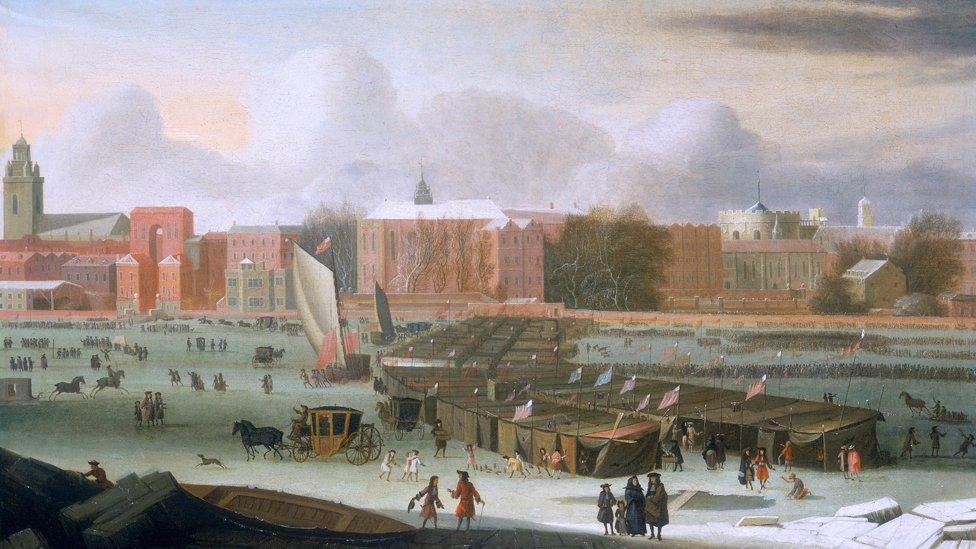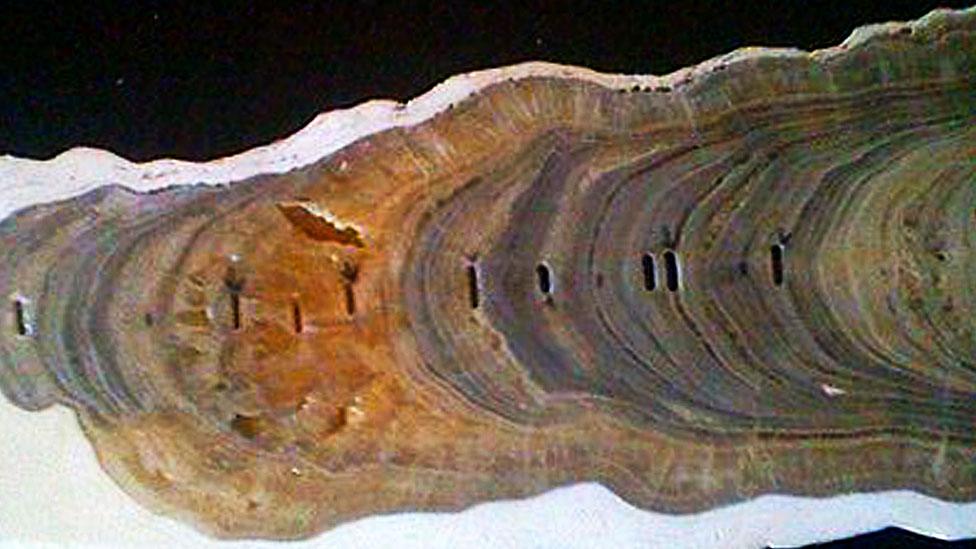America colonisation ‘cooled Earth's climate’
- Published
Mark Maslin and Chris Brierley: "A genocide-generated drop in carbon dioxide"
Colonisation of the Americas at the end of the 15th Century killed so many people, it disturbed Earth's climate.
That's the conclusion of scientists from University College London, UK.
The team says the disruption that followed European settlement led to a huge swathe of abandoned agricultural land being reclaimed by fast-growing trees and other vegetation.
This pulled down enough carbon dioxide (CO₂) from the atmosphere to eventually chill the planet.
It's a cooling period often referred to in the history books as the "Little Ice Age" - a time when winters in Europe would see the Thames in London regularly freeze over.
"The Great Dying of the Indigenous Peoples of the Americas led to the abandonment of enough cleared land that the resulting terrestrial carbon uptake had a detectable impact on both atmospheric CO₂ and global surface air temperatures," Alexander Koch and colleagues write in their paper published in Quaternary Science Reviews, external.

Cool times: A depiction of a 17th Century Frost Fair at Temple Stairs on London's Thames River
What does the study show?
The team reviewed all the population data it could find on how many people were living in the Americas prior to first contact with Europeans in 1492.
It then assessed how the numbers changed in following decades as the continents were ravaged by introduced disease (smallpox, measles, etc), warfare, slavery and societal collapse.
It's the UCL group's estimate that 60 million people were living across the Americas at the end of the 15th Century (about 10% of the world's total population), and that this was reduced to just five or six million within a hundred years.
The scientists calculated how much land previously cultivated by indigenous civilisations would have fallen into disuse, and what the impact would be if this ground was then repossessed by forest and savannah.
The area is in the order of 56 million hectares, close in size to a country like modern France.
This scale of regrowth is figured to have drawn down sufficient CO₂ that the concentration of the gas in the atmosphere eventually fell by 7-10ppm (that is 7-10 molecules of CO₂ in every one million molecules in the air).
"To put that in the modern context - we basically burn (fossil fuels) and produce about 3ppm per year. So, we're talking a large amount of carbon that's being sucked out of the atmosphere," explained co-author Prof Mark Maslin.
"There is a marked cooling around that time (1500s/1600s) which is called the Little Ice Age, and what's interesting is that we can see natural processes giving a little bit of cooling, but actually to get the full cooling - double the natural processes - you have to have this genocide-generated drop in CO₂."

The fall in global carbon dioxide levels is recorded in the air bubbles trapped in ice cores
Where's the support for the connection?
The drop in CO₂ at the time of the Great Dying is evident in the ice core records from Antarctica.
Air bubbles trapped in these frozen samples show a fall in their concentration of carbon dioxide.
The atomic composition of the gas also suggests strongly that the decline is being driven by land processes somewhere on Earth.
In addition, the UCL team says the story fits with the records of charcoal and pollen deposits in the Americas.
These show the sort of perturbation expected from a decline in the use of fire to manage land, and a big grow-back of natural vegetation.
Ed Hawkins, professor of climate science at Reading University, was not involved in the study. He commented: "Scientists understand that the so-called Little Ice Age was caused by several factors - a drop in atmospheric carbon dioxide levels, a series of large volcanic eruptions, changes in land use and a temporary decline in solar activity.
"This new study demonstrates that the drop in CO₂ is itself partly due the settlement of the Americas and resulting collapse of the indigenous population, allowing regrowth of natural vegetation. It demonstrates that human activities affected the climate well before the industrial revolution began."
Are there lessons for modern climate policy?
Co-author Dr Chris Brierley believes there is. He said the fall-out from the terrible population crash and re-wilding of the Americas illustrated the challenge faced by some global warming solutions.
"There is a lot of talk around 'negative emissions' approaches and using tree-planting to take CO₂ out of the atmosphere to mitigate climate change," he told BBC News.
"And what we see from this study is the scale of what's required, because the Great Dying resulted in an area the size of France being reforested and that gave us only a few ppm. This is useful; it shows us what reforestation can do. But at the same, that kind of reduction is worth perhaps just two years of fossil fuel emissions at the present rate."
The study also has a bearing on discussions about the creation of a new label to describe humanity's time - and impacts - on Earth.
This epoch would be called the Anthropocene, and there is currently a lively debate over how it should be recognised in the geological record.
Some researchers say it would be most obvious in deposits that record the great acceleration in industrial activity from the 1950s onwards.
But the UCL team argues that the Great Dying in the Americas shows there are significant human interactions that left a deep and indelible mark on the planet long before the mid-20th Century.
Jonathan.Amos-INTERNET@bbc.co.uk, external and follow me on Twitter: @BBCAmos, external
- Published18 July 2018

- Published25 January 2017